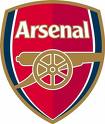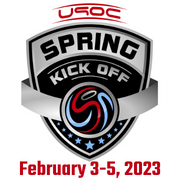
The newest registered user is Karly
Our users have posted a total of 205242 messages in 32019 subjects
Cleats and ACL Injuries
 Cleats and ACL Injuries
Cleats and ACL Injuries
(1) Bladed cleats which have hard plastic, teeth-shaped traction and deep cleats at the heal,
(2) Rounded cleats with softer pegs that are circular and slightly more closely spaced, and
(3) Outdoor artificial turf shoes with very short rubber "nubbies" covering the entire bottom of the sole.
So if each player stood flat on one foot and attempted to spin 90 degrees, which shoe is going to stick the hardest to the ground and potentially lead to a knee injury?
My younger daughter just completed a science fair project last night asking this question: Could the type of soccer shoe make a player more likely to injure her ACL in a rotational, non-impact spin? She built a wooden "foot" and "leg", attached one of the shoes, weighted it with an 80 pound bag of concrete mix, and tested the force needed to reach the slipping point on both taller thick grass and shorter thin grass with a torque wrench. Again, to me, it was a no brainer. The bladed cleats were going to hold like glue and the outdoor turf shoes would easily spin.
Here's how it actually played out (although I don't recall the exact numbers):
* The bladed cleat and "nubby" turf shoe gave almost identical results in both types of grass at around 19-20 pounds of force, even after repeated tests.
* The rounded rubber cleats slipped slighlty more easily on thick grass at around 17 pounds but was again just about equal to the other two in the thick grass.
Now, given that the grass was dry for this test but the ground was moist after so much precipitation lately, it's still hard to explain. Why didn't the cleats grab harder into the soil? Upon close evaluation, they barely even left an imprint. It might have been different on muddy, bare ground but it sure wasn't on compacted, grassy soil (even with almost no grass). Needless to say, her conclusion for the science fair was that while other forces on a soccer shoe may vary - stopping, landing from a jump, et cetera - twisting force was a virtual constant.
Sorry if all this makes you think too hard today. I was genuinely surprised and impressed with the results. It will sure make me think before I tell a parent that one shoe is safer than the other... just based on my own opinion and "logic".

JustaSport- TxSoccer Sponsor

- Posts : 299
Points : 5889
Join date : 2009-08-19
 Re: Cleats and ACL Injuries
Re: Cleats and ACL Injuries
Your daughter is a future "mythbuster".

Slakemoth- TxSoccer Postmaster

- Posts : 479
Points : 6168
Join date : 2009-06-02
 Re: Cleats and ACL Injuries
Re: Cleats and ACL Injuries

TNT- TxSoccer Postmaster

- Posts : 308
Points : 5510
Join date : 2010-09-07
 Re: Cleats and ACL Injuries
Re: Cleats and ACL Injuries
TNT wrote:I had a head trainer over a large school district state that they had conducted a ten year study in regards to bladed and non-bladed cleats regarding girls soccer and knee injuries. He stated that there was a much higher percentage of injuries with the bladed cleat. Since such and for other reasons we have stuck with the Addias Copas. Not sure if there is validity to such, but why chance it.
Great shoe!
Guest- Guest
 Re: Cleats and ACL Injuries
Re: Cleats and ACL Injuries
However, the enginerd in me is wondering if the parameters of the experiment were sufficient to simulate reality. I'm not sure if the 80 lbs. of concrete are enough to simulate the actual pressure/force involved in a typical teenage girl planting and rotating off of one leg on a soccer pitch. My guess is that the forces are actually much higher than 80lbs. (I would bet in the 200-300 lb. range), thus compressing the cleat further into the turf.
That may be why the results came out the way that they did.
The other variable that isn't taken into account is that it is widely understood that the hip/knee/lower leg alignment/angle in women is a significant contributing factor in ACL injuries, so if the weight is applied at an angle other than directly vertical, would the torque required to rotate the different cleats vary?
Guest- Guest
 Re: Cleats and ACL Injuries
Re: Cleats and ACL Injuries
bwgophers wrote:Excellent (and I'm sure fun!) science fair project.
However, the enginerd in me is wondering if the parameters of the experiment were sufficient to simulate reality. I'm not sure if the 80 lbs. of concrete are enough to simulate the actual pressure/force involved in a typical teenage girl planting and rotating off of one leg on a soccer pitch. My guess is that the forces are actually much higher than 80lbs. (I would bet in the 200-300 lb. range), thus compressing the cleat further into the turf.
That may be why the results came out the way that they did.
The other variable that isn't taken into account is that it is widely understood that the hip/knee/lower leg alignment/angle in women is a significant contributing factor in ACL injuries, so if the weight is applied at an angle other than directly vertical, would the torque required to rotate the different cleats vary?
I completely agree. This was a science experiment conducted by a 12-year old girl. But I have to say that when I was balancing the model so she could turn the wrench and I heard that torque wrench 'click' at the point of slippage, it absolutely surprised me. She would do it clockwise 3x and counterclockwise 3x for each shoe on each of the surfaces. I would still maintain that a bladed cleat landing on a hard jump and being spun on the deep heel studs would SURELY generate more torque. But in a controlled setting (shoe flat, no jump) there was miniscule variation. It would be great to see a comprehensive and detailed study on this.
Not that there's necessarily a relationship, but my 19-year old daughter and I have always wore Copa-style cleats for soccer and have never torn my ACL (me from age 6 - 45). My 12-year old has always relied on outdoor turf shoes, so I'm hoping she has the same good luck. Bladed cleats look like an accident waiting to happen with those 1" heel studs.

JustaSport- TxSoccer Sponsor

- Posts : 299
Points : 5889
Join date : 2009-08-19
 Ever try ASICS
Ever try ASICS

Knightkeepr- TxSoccer Poster

- Posts : 34
Points : 5482
Join date : 2010-01-03
Location : Near the 6 yard box
 Re: Cleats and ACL Injuries
Re: Cleats and ACL Injuries
ZzzKing- TxSoccer Poster

- Posts : 16
Points : 4597
Join date : 2012-05-07
 Re: Cleats and ACL Injuries
Re: Cleats and ACL Injuries
ZzzKing wrote:What this may be saying is that torsion is not usually the critical factor. The ligament failures may be due to excessive lateral bending stress on the knee.
Yeah, sometimes the torsion force goes through the MCL or LCL.
I don't think wearing one type of spike is going to make a difference over an other type of spike. Us
fitness4soccer- TxSoccer Lurker

- Posts : 3
Points : 4334
Join date : 2013-01-15
 Re: Cleats and ACL Injuries
Re: Cleats and ACL Injuries
Txsoccernet- TxSoccer Lurker

- Posts : 1
Points : 4297
Join date : 2013-02-17
 Re: Cleats and ACL Injuries
Re: Cleats and ACL Injuries
Txsoccernet wrote:Does any one no why cleat are necessary for soccer? My daughter is getting ready to return to playing after being out with a stress fracture on her calcaneus. I am more concerned about her sustaining a knee injury. I have heard that there could be more hyperextension injuries without but I can't find anything to support this. I can't find any scientific data on why the kids need to be wearing the cleats to begin with. I do understand that it may make them more "competitive" but I am not willing to put my daughter's health at risk. Having gone through a ACL reconstruction myself and becoming a biomedical engineer have probably made me over think this. This is the only site that actually had anything informative on this issue. Thanks
Before giving my best opinion as a coach and player on this, I have to mention that my 11-year old ended up winning first place among 6 school districts for her science experiment on this issue. Pretty fun for a dad to watch.
To your specific question, you are correct that there is no significant research on the correlation of shoe types and soccer injuries. You would think a Google search would spit out lots of real-world studies, right? I can tell you I personally play in outdoor turf shoes ("nubbies") and never slip. After years of playing in true cleats, I can't tell a difference in stability... and at 45, I'm not so sure-footed anymore. As a bonus, the touch on the ball is markedly better in turf shoes than it is in cleats, especially when the ball is wet. I assume it has to do with surface area contact.
My younger daughter wears exclusively outdoor turf shoes as do most of the players on my youngest team per my recommendation. I'm just not seeing an increase in slipping and falling versus cleats; so my opinion is there is no true "need to be wearing" cleats. I hope this helps.

JustaSport- TxSoccer Sponsor

- Posts : 299
Points : 5889
Join date : 2009-08-19
 Re: Cleats and ACL Injuries
Re: Cleats and ACL Injuries

dadof3- TxSoccer Addict

- Posts : 1033
Points : 6016
Join date : 2012-07-16
Location : McKinney




